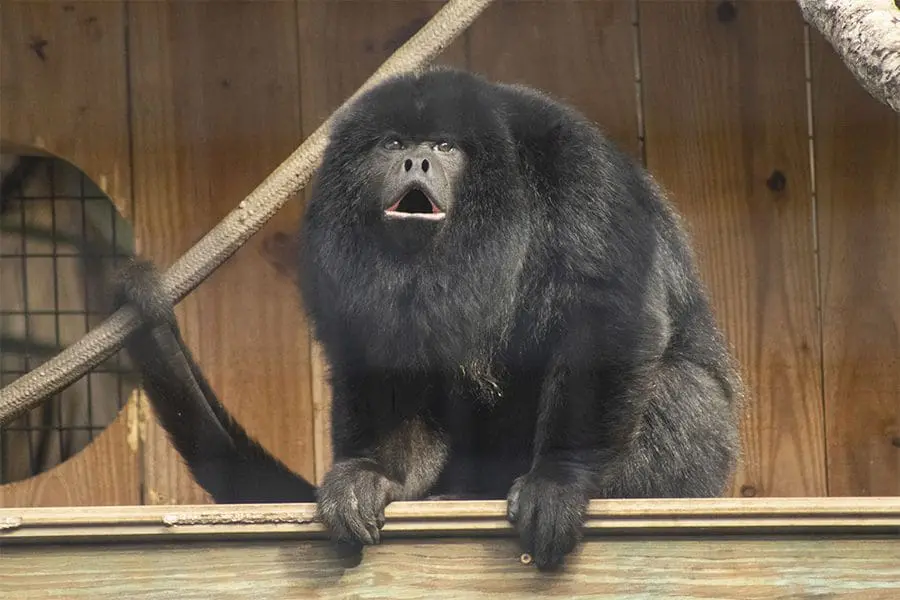

There are many new sights, smells and sounds for our new howler monkeys.
The Flooded Forest in Rainforest Revealed just got four times cuter—and louder. Our troop of howler monkeys is settling in together after a few weeks of “howdys.”
In November, we welcomed four female black howler monkeys—Baya, Bennie, Batata and Beatle—to Brevard Zoo as part of the Association of Zoos and Aquariums’ Species Survival Plan (SSP) for their species. Three of the four were recommended to breed with 17-year-old male Stormy, who has been at the Zoo since 2017. Twenty-two-year-old female howler monkey Maddie has also called the Zoo home for the past four years.
As is customary for all animals at the Zoo, the four females underwent a quarantine period upon their arrival to prevent the introduction of novel diseases or parasites to the animals already in our care. New animals are quarantined either behind the scenes or on habitat for a minimum of 30 days during this period.
We made the decision to quarantine the troop of females in a Rainforest Revealed habitat across the boardwalk from the Flooded Forest area so that they could see, smell and hear Stormy and Maddie (and vice versa) before the real introductions began.
We call this “howdying,” or allowing two animals (or groups of animals) to get acquainted with each other before sharing a space. During this process, they meet with a barrier in between and are closely supervised by animal care staff to watch for positive social behaviors.
Maddie and Stormy and the four females quickly began their “howdys,” and we observed lots of positive vocalizations and behaviors between the groups. The girls were often spotted in the overhead tunnels making their infamous howling noises at Stormy and Maddie, who reciprocated from the other side.
Once the females’ quarantine period was over, our staff felt confident enough to start the next step of introductions—giving the girl group access to the Flooded Forest habitat. Stormy and Maddie were relocated to a temporary habitat during this time so they did not become territorial with new animals entering their space.
The girls quickly made themselves at home, exploring every nook and cranny of the expansive habitat. They met some of their new roommates, like capybaras, macaws and ducks, while staff kept a close watch. They spent a week in the space on their own before we felt that they were comfortable enough to begin the last step of introductions: meeting face-to-face.
“Introductions with monkey species is a long process with lots of ups and downs,” said Lauren Hinson, the Zoo’s director of animal programs. “Howler monkeys can live in groups of 20 or so and are usually led by one male, while the females establish their own hierarchy.”
On Tuesday morning, a group of animal care staff was on hand as Stormy and Maddie entered Flooded Forest to meet the girls for the first time. As expected, there were some moments of tension among the females as they figured out “who’s boss.” As the sole male, Stormy assumed the dominant role in the troop and hung back.

Stormy is easy to tell apart from the females due to his coloring!
If you visit the area soon, you may notice a staff member monitoring the Flooded Forest area or that some individuals have been moved away from the larger group. This will be done as necessary to ensure the safety and wellbeing of all members of the troop as our two groups become more familiar and determine their social hierarchy.
While we are not sure how long the introduction period will last, rest assured that this process is completely normal and natural, and we will continue to monitor our howlers closely. We are hopeful that all six individuals will soon coexist peacefully and that baby howler monkeys are in their future!
Brevard Zoo is an independent, not-for-profit organization that receives no recurring government funding for our operating costs. Your generous support enables us to continue to serve our community and continue our vital animal wellness, education and conservation programs.
